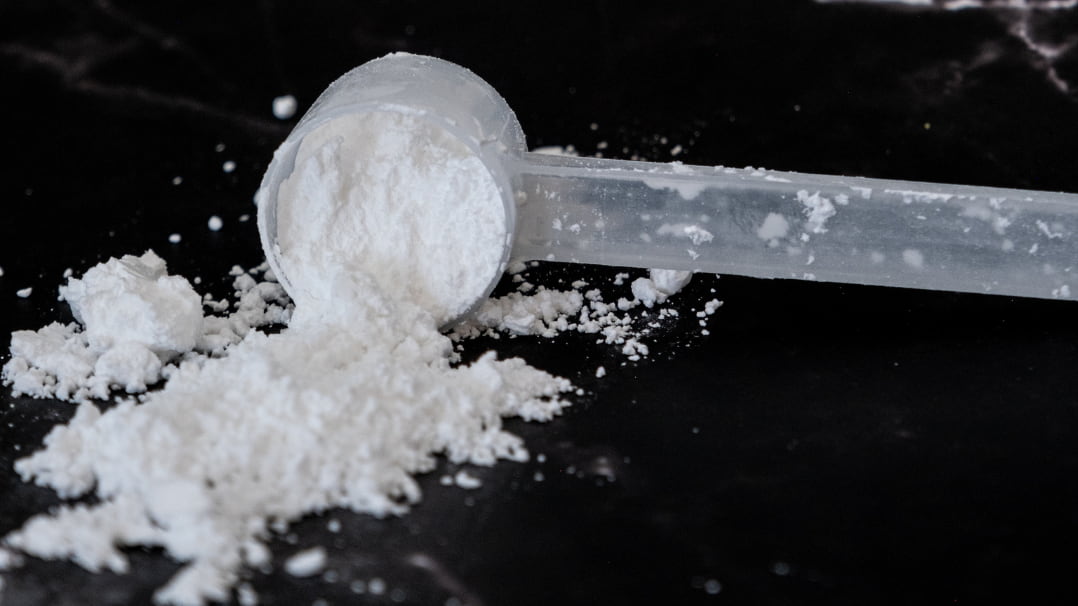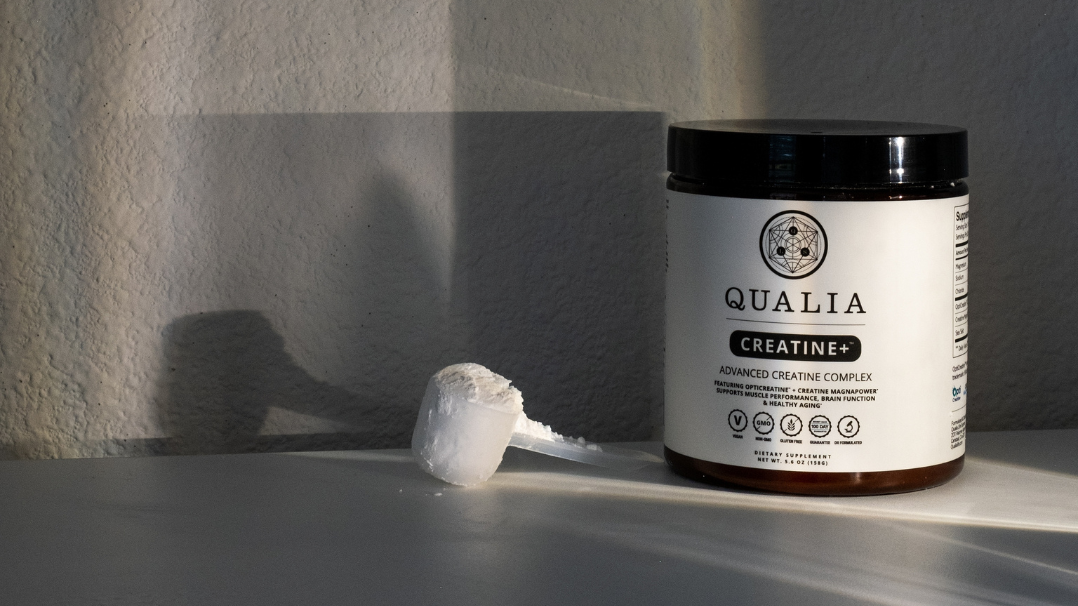In recent years, probiotics have gained significant popularity due to their potential health benefits. These live microorganisms, when consumed in adequate amounts, can support gut health and overall well-being.* Probiotics offer a range of benefits, but choosing the right one for you can be challenging given the diversity of probiotics available in the market. This article aims to help you understand how probiotics may support your gut health and how to navigate the complexities of probiotic selection to maximize their potential benefits.
Understanding Probiotics
Probiotics are live microorganisms that can provide health benefits when taken in adequate amounts [1]. Probiotics support human health by helping to maintain a balanced gut microbiota—the community of microorganisms that inhabit our gut and support our health [2].*
The gut microbiota produces metabolites that interact with cells in the gut or are absorbed into the bloodstream and that can support human physiological processes. A balanced gut microbiota is vital for gut health and well-being, as it protects against harmful bacteria, helps with digestion and nutrient absorption, and influences metabolism, and immune, endocrine, and neural signaling [3–6].*
There are many different types of probiotics with specific characteristics and benefits, but some effects tend to be shared by most probiotics, including: supporting a favorable gut environment, helping to balance or stabilize the gut microbiome, promoting healthy microbial metabolism, promoting resistance to unwanted microorganisms, and supporting gastrointestinal performance [1].* By promoting a healthy gut ecosystem, probiotics can benefit multiple aspects of human health. For example, research has shown that, in addition to gastrointestinal and digestive health, probiotics may support immune health, skin health, and healthy mood and cognitive performance [7–12].*
Top Probiotic Species for Gut Health
Bacillus Species
Bacillus species are widespread in nature and are found in the human gut [13]. Bacillus have also long been used in foods, particularly in the preparation of alkaline-fermented foods and soy-based food products. Therefore, Bacillus species are regularly consumed through fermented foods.
Bacillus are spore-forming bacteria. Probiotics in the spore form tend to be more resistant to degradation because spores have a protective outer shell (or coating) that allows them to: be stable at room temperature (i.e., not require refrigeration), survive the harsh conditions of the stomach and small intestines, and germinate and proliferate when they reach the colon [14–17]. Spores of Bacillus probiotics germinate, grow, and resporulate in the GI tract [18,19].*
At Qualia Life, we appreciate the hardiness of Bacillus probiotics—they are resilient, shelf-stable, and don’t require refrigeration. Therefore, we included three species of Bacillus in Qualia Probiotic+: Bacillus subtilis, Bacillus clausii, and Bacillus coagulans (as LactoSpore®). These three species have been used in combination in a clinical study and shown to support digestion and help alleviate gastrointestinal discomfort [20]. But they also have their own benefits.*
Bacillus subtilis
Bacillus subtilis is found in the human gastrointestinal tract and is thought to be a part of our native gut microbiota [21,22]. Bacillus subtilis has been used for supporting gut health since the 1950s. In clinical studies, Bacillus subtilis supported gastrointestinal regularity and temporary relief of abdominal discomfort, healthy immune function and signaling, and metabolic health [23–30].*
Bacillus clausii
Bacillus clausii is found in the normal microflora of the gut in healthy adults and children [22,31]. It has immune-modulatory properties and has been used for supporting immune and gut health for more than 40 years [32–40]. Bacillus clausii supports mucosal barrier integrity and healthy gut barrier defenses* [34,37]. In clinical studies, it supported healthy gastrointestinal function and healthy immune function [33,38–40].*
Bacillus coagulans
Bacillus coagulans can produce antimicrobial compounds that help maintain a healthy composition of the gut microbiota [41]. It supports mucosal barrier integrity and gut barrier functions [42,43]. In clinical studies, supplementation with Bacillus coagulans supported healthy gastrointestinal function and positive mood [44–47] .*
[Note: One thing to keep in mind with probiotics, especially when it comes to reading scientific studies, is that the field of science responsible for naming and classifying things—taxonomy—can change its mind. Bacillus coagulans was originally named Lactobacillus sporogenes, which was then changed to B. coagulans, and then more recently to Weizmannia coagulans, and most recently to Heyndrickxia coagulans. Bacillus clausii has also been reclassified and is now known as Alkalihalobacillus clausii. Dietary supplements mostly still use the older names that consumers are familiar with.]
Lactobacillus Species
Lactobacillus is a complex and diverse group with various species, some of which are known to be beneficial, whereas others remain largely underexplored. Lactobacillus species are found abundantly in the human gut, although their levels can vary widely based on individual and environmental factors [48,49]. Lactobacillus are commonly used as probiotics and several species have been shown to support human biological processes.*
In general, Lactobacillus species support intestinal health by helping to strengthen the intestinal barrier and promoting a healthy composition of the gut microbiota [49]. They do so by helping to exclude undesirable bacteria by competing for the same binding sites in the gut, producing substances that prohibit harmful growth, and collaborating with other beneficial bacteria through the exchange of bacterial metabolites (known as cross-feeding) [49]. Lactobacillus also promotes healthy immune responses, metabolic regulation, and aids in the management of food sensitivity by modifying some food components that the body cannot metabolize itself [49,50].*
The Lactobacillus genus underwent a significant reclassification in April 2020, resulting in 25 new genera to better represent genetic relationships among species, so both in research and dietary supplements expect to see the newer names showing up more. Several Lactobacillus species commonly used as probiotics and their new names include:
Lactobacillus acidophilus
Lactobacillus rhamnosus (recently renamed to Lacticaseibacillus rhamnosus)
Lactobacillus plantarum (recently renamed to Lactiplantibacillus plantarum)
Lactobacillus gasseri
Lactobacillus casei (recently renamed to Lacticaseibacillus casei)
Bifidobacterium Species
Bifidobacterium species are among the first microbes to colonize the human intestine naturally after birth and they are the predominant bacteria in the intestinal microflora during the neonatal period, especially in breast-fed infants. As the intestinal microflora changes with age, there is a reduction in the percentage of Bifidobacterium. In adulthood, their abundance and diversity in the colon are closely related to host health [51,52].
Bifidobacterium species have important roles in the gut ecosystem [53]. For example, they produce acetic acid that suppresses the growth of harmful bacteria due to its strong bactericidal action [54], help to exclude undesirable microbes [55], support a healthy intestinal mucosa [56], and process complex polysaccharides to provide energy to other microbes [53]. Many probiotic Bifidobacterium species have shown beneficial effects on humans or animals, including supporting immune health, facilitating host nutrient absorption, and supporting mood and mental well-being [57].*
Bifidobacterium species commonly used as probiotics include:
Bifidobacterium longum
Bifidobacterium lactis
Bifidobacterium breve
Bifidobacterium animalis
Bifidobacterium adolescentis
Akkermansia muciniphila
Akkermansia muciniphila is a bacteria that lives in the mucus layer of the human gut. Akkermansia plays an important part in maintaining gut health because it degrades mucus to use it as energy and, in doing so, stimulates its renewal and helps maintain a healthy gut environment. Akkermansia also supports healthy immune and metabolic processes in the human body [58,59]. The abundance of Akkermansia in the gut is correlated with good health, but it can be affected by age, diet, and health status, for example [60,61].
Supplementation with Akkermansia helps to increase its abundance in the gut [62]. Clinical studies on the benefits of Akkermansia supplementation are still limited, but both live and pasteurized oral Akkermansia supplements have supported metabolic parameters in overweight people [63]. Animal studies have suggested that Akkermansia (either live or pasteurized) may be a promising probiotic as it promoted gut barrier function and a balanced gut microbiota composition, along with healthy immune signaling and defenses, metabolism, and energy homeostasis; Akkermansia also supported healthy aging [64–68].*
Selecting the Right Probiotic for Your Gut
In addition to the examples above, many other microbial species can be used as probiotic supplements. Furthermore, within each species, there can be different strains (i.e., different genetic variants) which may have unique benefits. Among such a great diversity of strains and formulations targeting different health needs, it can be hard to choose the right probiotic supplement for your needs.
At Qualia Life, we believe that the best approach to support gut health is diversity—not only of probiotic species but also of supportive compounds such as prebiotics and polyphenol-rich plants. For example, adding prebiotics to a combination of probiotics may help enhance the benefits of probiotics. That’s because prebiotics, which are mainly dietary fibers that humans cannot fully digest, are digested and used as food by gut microorganisms, helping them grow and play their part in the gut ecosystem [5]. Therefore, combining probiotics and prebiotics provides not only health-promoting microbes but also the fuel they need to do their job. This helps to create an optimal environment for beneficial gut microbes to thrive, and consequently, to support human health [9,69].*
Therefore, rather than choosing a specific probiotic species, combining a few species with prebiotics and other compounds that help to support gut health is, in our view, a more complete and beneficial approach to supporting a healthy gut microbiome and promoting balance and resilience within the gut ecosystem.*
Incorporating Probiotics into Your Daily Routine
Incorporating probiotics into a daily routine can support gut health, digestion, and overall well-being. Adding probiotic-rich foods to a diet is one of the simplest ways to introduce these good bacteria naturally. Fermented foods, such as yogurt, kefir, sauerkraut, kimchi, miso, tempeh, and kombucha, are excellent sources of probiotics. As we discussed above, probiotics may work even better when paired with prebiotics. Adding plant-based, high-fiber foods to your diet will help you get the most out of probiotics [70].
Supplements can also be a helpful addition to probiotics and prebiotics. Supplements can complement food sources, but they should not replace a well-rounded diet rich in natural probiotics and prebiotics. Rather, combining supplements with a healthy diet is an ideal strategy to optimize gut health and overall well-being.*
Qualia Probiotic+ for Gut Health
Qualia Probiotic+ was developed to provide all-in-one support for gastrointestinal health and gut performance. It combines three species of probiotics, four prebiotic fibers, three postbiotic ingredients, twelve fermented berries and herbs, five types of digestive enzymes, and additional minerals and ingredients to support the gut-brain axis. A serving is high in fiber and only uses FODMAP-friendly fibers.* Check out Qualia Probiotic+ Ingredients to learn more about this product.
*These statements have not been evaluated by the Food and Drug Administration. This product is not intended to diagnose, treat, cure, or prevent any disease.
References
[1]C. Hill, F. Guarner, G. Reid, G.R. Gibson, D.J. Merenstein, B. Pot, L. Morelli, R.B. Canani, H.J. Flint, S. Salminen, P.C. Calder, M.E. Sanders, Nat. Rev. Gastroenterol. Hepatol. 11 (2014) 506–514.
[2]R. Sender, S. Fuchs, R. Milo, PLoS Biol. 14 (2016) e1002533.
[3]S. Salminen, M.C. Collado, A. Endo, C. Hill, S. Lebeer, E.M.M. Quigley, M.E. Sanders, R. Shamir, J.R. Swann, H. Szajewska, G. Vinderola, Nat. Rev. Gastroenterol. Hepatol. 18 (2021) 649–667.
[4]G. Vinderola, M.E. Sanders, S. Salminen, Foods 11 (2022).
[5]G.R. Gibson, R. Hutkins, M.E. Sanders, S.L. Prescott, R.A. Reimer, S.J. Salminen, K. Scott, C. Stanton, K.S. Swanson, P.D. Cani, K. Verbeke, G. Reid, Nat. Rev. Gastroenterol. Hepatol. 14 (2017) 491–502.
[6]K. Hou, Z.-X. Wu, X.-Y. Chen, J.-Q. Wang, D. Zhang, C. Xiao, D. Zhu, J.B. Koya, L. Wei, J. Li, Z.-S. Chen, Signal Transduct. Target. Ther. 7 (2022) 135.
[7]V.E. Vera-Santander, R.H. Hernández-Figueroa, M.T. Jiménez-Munguía, E. Mani-López, A. López-Malo, Molecules 28 (2023) 1230.
[8]S. Gul, E. Durante-Mangoni, J. Clin. Med. Res. 13 (2024) 1436.
[9]H.-Y. Li, D.-D. Zhou, R.-Y. Gan, S.-Y. Huang, C.-N. Zhao, A. Shang, X.-Y. Xu, H.-B. Li, Nutrients 13 (2021) 3211.
[10]N.-M. Maftei, C.R. Raileanu, A.A. Balta, L. Ambrose, M. Boev, D.B. Marin, E.L. Lisa, Microorganisms 12 (2024).
[11]S. Mörkl, M.I. Butler, A. Holl, J.F. Cryan, T.G. Dinan, Curr. Nutr. Rep. 9 (2020) 171–182.
[12]H. Den, X. Dong, M. Chen, Z. Zou, Aging 12 (2020) 4010–4039.
[13]I. Sorokulova, J. Probiotics Health 1 (2013).
[14]G. Konuray, Z. Erginkaya, Foods 7 (2018) 92.
[15]M. Majeed, S. Majeed, K. Nagabhushanam, S. Arumugam, K. Beede, F. Ali, Food Res. Int. 121 (2019) 497–505.
[16]T. Shinde, R. Vemuri, M.D. Shastri, A.P. Perera, S. Tristram, R. Stanley, R. Eri, J. Funct. Foods 52 (2019) 100–108.
[17]J.J. Ahire, M.S. Kashikar, R.S. Madempudi, 3 Biotech 11 (2021) 116.
[18]G. Casula, S.M. Cutting, Appl. Environ. Microbiol. 68 (2002) 2344–2352.
[19]N.T. Hoa, L. Baccigalupi, A. Huxham, A. Smertenko, P.H. Van, S. Ammendola, E. Ricca, A.S. Cutting, Appl. Environ. Microbiol. 66 (2000) 5241–5247.
[20]R.J. Soman, M.V. Swamy, International Journal of Colorectal Disease 34 (2019) 1971–1978.
[21]H.A. Hong, R. Khaneja, N.M.K. Tam, A. Cazzato, S. Tan, M. Urdaci, A. Brisson, A. Gasbarrini, I. Barnes, S.M. Cutting, Res. Microbiol. 160 (2009) 134–143.
[22]R.B. Ellis-Pegler, C. Crabtree, H.P. Lambert, J. Hyg. 75 (1975) 135–142.
[23]A.M. Cuentas, J. Deaton, S. Khan, J. Davidson, C. Ardita, J. Probiotics Health 05 (2017).
[24]M. Hatanaka, K. Yamamoto, N. Suzuki, S. Iio, T. Takara, H. Morita, T. Takimoto, T. Nakamura, Benef. Microbes 9 (2018) 357–365.
[25]C. Penet, R. Kramer, R. Little, J.L. Spears, J. Parker, J.K. Iyer, N. Guthrie, M. Evans, Altern. Ther. Health Med. 27 (2021) 146–157.
[26]S.M. Garvey, E. Mah, T.M. Blonquist, V.N. Kaden, J.L. Spears, Gut Microbes 14 (2022) 2122668.
[27]J.R. Townsend, D. Bender, W.C. Vantrease, P.A. Sapp, A.M. Toy, C.A. Woods, K.D. Johnson, Sports (Basel) 6 (2018).
[28]M. Lefevre, S.M. Racedo, G. Ripert, B. Housez, M. Cazaubiel, C. Maudet, P. Jüsten, P. Marteau, M.C. Urdaci, Immun. Ageing 12 (2015) 24.
[29]J. Colom, D. Freitas, A. Simon, E. Khokhlova, S. Mazhar, M. Buckley, C. Phipps, J. Deaton, A. Brodkorb, K. Rea, Benef. Microbes 14 (2023) 31–43.
[30]R.E. Trotter, A.R. Vazquez, D.S. Grubb, K.E. Freedman, L.E. Grabos, S. Jones, C.L. Gentile, C.L. Melby, S.A. Johnson, T.L. Weir, Benef. Microbes 11 (2020) 621–630.
[31]L. Hoyles, H. Honda, N.A. Logan, G. Halket, R.M. La Ragione, A.L. McCartney, Res. Microbiol. 163 (2012) 3–13.
[32]M.C. Urdaci, P. Bressollier, I. Pinchuk, J. Clin. Gastroenterol. 38 (2004) S86–90.
[33]G. Ciprandi, A. Vizzaccaro, I. Cirillo, M.A. Tosca, Allergy 60 (2005) 702–703.
[34]S. Di Caro, H. Tao, A. Grillo, F. Franceschi, C. Elia, M.A. Zocco, G. Gasbarrini, A.R. Sepulveda, A. Gasbarrini, Eur. J. Gastroenterol. Hepatol. 17 (2005) 951–960.
[35]H.Y. Dar, S. Pal, P. Shukla, P.K. Mishra, G.B. Tomar, N. Chattopadhyay, R.K. Srivastava, Nutrition 54 (2018) 118–128.
[36]B. Pradhan, D. Guha, A.K. Naik, A. Banerjee, S. Tambat, S. Chawla, S. Senapati, P. Aich, Probiotics Antimicrob. Proteins 11 (2019) 887–904.
[37]L. Paparo, L. Tripodi, C. Bruno, L. Pisapia, C. Damiano, L. Pastore, R. Berni Canani, Sci. Rep. 10 (2020) 12636.
[38]M.R. Sudha, S. Bhonagiri, M.A. Kumar, Benef. Microbes 4 (2013) 211–216.
[39]E.C. Nista, M. Candelli, F. Cremonini, I.A. Cazzato, M.A. Zocco, F. Franceschi, G. Cammarota, G. Gasbarrini, A. Gasbarrini, Alimentary Pharmacology & Therapeutics 20 (2004) 1181–1188.
[40]M. Plomer, M. Perez Iii, D.M. Greifenberg, Infect Dis Ther 9 (2020) 867–878.
[41]B. Hyronimus, C. Le Marrec, M.C. Urdaci, J. Appl. Microbiol. 85 (1998) 42–50.
[42]S.-C. Xing, C.-B. Huang, J.-D. Mi, Y.-B. Wu, X.-D. Liao, Environ. Pollut. 255 (2019) 113139.
[43]T. Wu, Y. Zhang, Y. Lv, P. Li, D. Yi, L. Wang, D. Zhao, H. Chen, J. Gong, Y. Hou, Int. J. Mol. Sci. 19 (2018).
[44]M. Majeed, K. Nagabhushanam, S. Arumugam, S. Majeed, F. Ali, Food & Nutrition Research 62 (2018).
[45]M. Majeed, K. Nagabhushanam, S. Natarajan, A. Sivakumar, F. Ali, A. Pande, S. Majeed, S.K. Karri, Nutr. J. 15 (2016) 21.
[46]L. Hun, Postgrad. Med. 121 (2009) 119–124.
[47]M. Majeed, K. Nagabhushanam, S. Paulose, S. Arumugam, L. Mundkur, Medicine 102 (2023) e33109.
[48]D.E. Almonacid, L. Kraal, F.J. Ossandon, Y.V. Budovskaya, J.P. Cardenas, E.M. Bik, A.D. Goddard, J. Richman, Z.S. Apte, PLoS One 12 (2017) e0176555.
[49]R. Huang, F. Wu, Q. Zhou, W. Wei, J. Yue, B. Xiao, Z. Luo, Microbiol. Res. 260 (2022) 127019.
[50]A. Caminero, M. Meisel, B. Jabri, E.F. Verdu, Nat. Rev. Gastroenterol. Hepatol. 16 (2019) 7–18.
[51]B.-L. He, Y. Xiong, T.-G. Hu, M.-H. Zong, H. Wu, Crit. Rev. Food Sci. Nutr. 63 (2023) 8048–8065.
[52]E. Avershina, O. Storrø, T. Øien, R. Johnsen, R. Wilson, T. Egeland, K. Rudi, Appl. Environ. Microbiol. 79 (2013) 497–507.
[53]A. O’Callaghan, D. van Sinderen, Front. Microbiol. 7 (2016) 925.
[54]H.J. Lim, H.S. Shin, J. Microbiol. Biotechnol. 30 (2020) 1793–1800.
[55]K. Kailasapathy, J. Chin, Immunol. Cell Biol. 78 (2000) 80–88.
[56]M.A. Engevik, B. Luk, A.L. Chang-Graham, A. Hall, B. Herrmann, W. Ruan, B.T. Endres, Z. Shi, K.W. Garey, J.M. Hyser, J. Versalovic, MBio 10 (2019).
[57]J. Chen, X. Chen, C.L. Ho, Front. Bioeng. Biotechnol. 9 (2021) 770248.
[58]R. Ghotaslou, E. Nabizadeh, M.Y. Memar, W.M.H. Law, M.A. Ozma, M. Abdi, M. Yekani, H. Kadkhoda, R. Hosseinpour, S. Bafadam, A. Ghotaslou, H.E. Leylabadlo, J. Nezhadi, Microbiol. Res. 266 (2023) 127245.
[59]P.D. Cani, C. Depommier, M. Derrien, A. Everard, W.M. de Vos, Nat. Rev. Gastroenterol. Hepatol. 19 (2022) 625–637.
[60]N. Ottman, S.Y. Geerlings, S. Aalvink, W.M. de Vos, C. Belzer, Best Pract. Res. Clin. Gastroenterol. 31 (2017) 637–642.
[61]A. Pellegrino, G. Coppola, F. Santopaolo, A. Gasbarrini, F.R. Ponziani, Nutrients 15 (2023).
[62]K. Zhou, J. Funct. Foods 33 (2017) 194–201.
[63]C. Depommier, A. Everard, C. Druart, H. Plovier, M. Van Hul, S. Vieira-Silva, G. Falony, J. Raes, D. Maiter, N.M. Delzenne, M. de Barsy, A. Loumaye, M.P. Hermans, J.-P. Thissen, W.M. de Vos, P.D. Cani, Nat. Med. 25 (2019) 1096–1103.
[64]J. Yan, L. Sheng, H. Li, Gut Microbes 13 (2021) 1984104.
[65]M. Zheng, R. Han, Y. Yuan, Y. Xing, W. Zhang, Z. Sun, Y. Liu, J. Li, T. Mao, Front. Immunol. 13 (2022) 1089600.
[66]H. Plovier, A. Everard, C. Druart, C. Depommier, M. Van Hul, L. Geurts, J. Chilloux, N. Ottman, T. Duparc, L. Lichtenstein, A. Myridakis, N.M. Delzenne, J. Klievink, A. Bhattacharjee, K.C.H. van der Ark, S. Aalvink, L.O. Martinez, M.-E. Dumas, D. Maiter, A. Loumaye, M.P. Hermans, J.-P. Thissen, C. Belzer, W.M. de Vos, P.D. Cani, Nat. Med. 23 (2017) 107–113.
[67]A. Everard, C. Belzer, L. Geurts, J.P. Ouwerkerk, C. Druart, L.B. Bindels, Y. Guiot, M. Derrien, G.G. Muccioli, N.M. Delzenne, W.M. de Vos, P.D. Cani, Proc. Natl. Acad. Sci. U. S. A. 110 (2013) 9066–9071.
[68]S.-Y. Zeng, Y.-F. Liu, J.-H. Liu, Z.-L. Zeng, H. Xie, J.-H. Liu, Aging Dis. 14 (2023) 2015–2027.
[69]N. Al-Habsi, M. Al-Khalili, S.A. Haque, M. Elias, N.A. Olqi, T. Al Uraimi, Nutrients 16 (2024).
[70]D. Davani-Davari, M. Negahdaripour, I. Karimzadeh, M. Seifan, M. Mohkam, S.J. Masoumi, A. Berenjian, Y. Ghasemi, Foods 8 (2019) 92.







No Comments Yet
Sign in or Register to Comment